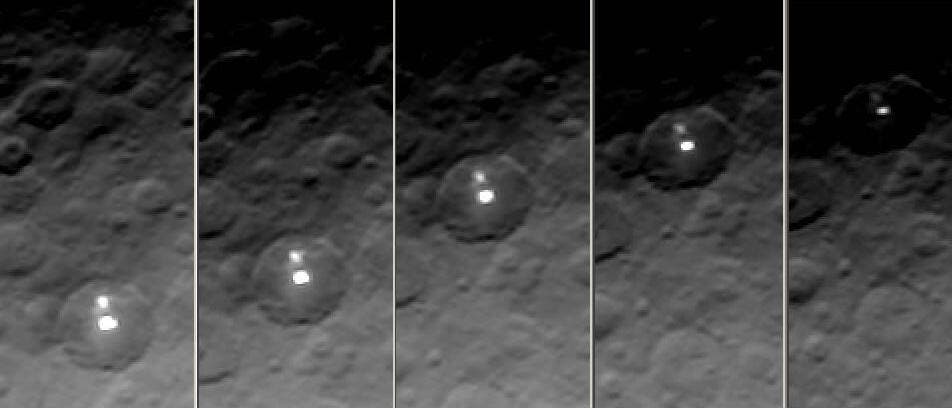Ceres is the largest body in the asteroid belt – too big to really be an asteroid, but too small to be a planet, it’s trapped in the “minor planet” classification. But Ceres might be much more interesting than other similar bodies, with its mysterious bright spots being a constant source of amazement.
We’ve written about the bright spots on Ceres before and how we don’t really know what they are. An informal NASA poll during May offered the following ideas for the nature of the spots: ice, volcanos, geysers, salt deposits, rock, or other.
New and very precise observations using the HARPS spectrograph at the ESO 3.6-metre telescope at La Silla, Chile, have revealed not only the rotation of these spots due to Ceres rotating around its own axis, but also unexpected variations which indicate that the spots are volatile and evaporate in sunlight. Ceres spins every nine hours and the velocities to and away from the Earth caused by this rotation are very small, but still large enough to be measurable via the Doppler effect with high-precision instruments such as HARPS.
The lead author of the new study, Paolo Molaro, at the INAF-Trieste Astronomical Observatory, explains:
“As soon as the Dawn spacecraft revealed the mysterious bright spots on the surface of Ceres, I immediately thought of the possible measurable effects from Earth. As Ceres rotates the spots approach the Earth and then recede again, which affects the spectrum of the reflected sunlight arriving at Earth.”
It only took two nights of observation from HARPS. The measurements were made in July and August in 2015, but were only now interpreted.
“The result was a surprise,” adds Antonino Lanza, at the INAF-Catania Astrophysical Observatory and co-author of the study. “We did find the expected changes to the spectrum from the rotation of Ceres, but with considerable other variations from night to night.”
The team now believes that whatever the substance within the bright spots may be, it is volatile enough to evaporate when exposed to sunlight. This effect, however, changes from night to night, giving rise to additional random patterns, on both short and longer timescales. If this is the case, then Ceres would be very different from other similar bodies like Ceres, and still geologically active. Ceres is known to be rich in water, but it is unclear whether this is related to the bright spots.
The energy source that drives this continual leakage of material from the surface is also unknown.










